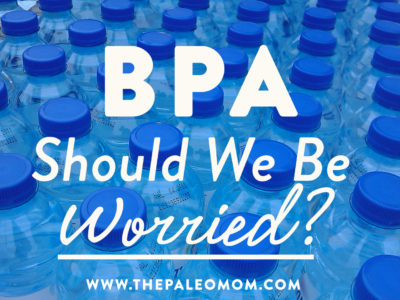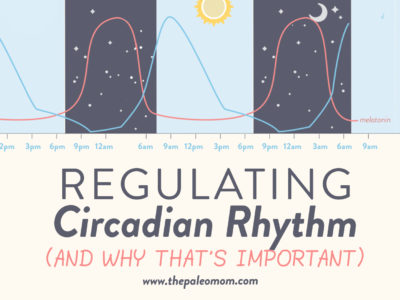There’s no shortage of fear surrounding potentially harmful chemicals in our food, water, and environment (if we pay attention to all the headlines, we might come away thinking that everything in the world is out to kill us!). Bisphenol A (or BPA for short) is one the more well-known chemicals that many of us regard as dangerous. And, considering how frequently it lurks in food and beverage containers, it might seem prudent to go out of our way to avoid it. But, BPA remains mired in controversy, and many health authorities (including the FDA) insist we have nothing to fear from normal levels of exposure. So, what’s the truth? Is BPA a legitimate hazard to our health, or an overblown non-issue? There’s only one way to find out… let’s look at what the science says!
What is BPA?
 BPA is an industrial chemical used to make certain plastics (especially for water bottles, baby bottles, and some food containers) and epoxy resins (used to coat the inside of some metal products, like food cans and bottle tops, in order to prevent food and liquids from corroding the aluminum). Because it’s relatively cheap to make, fantastic at hardening plastics, and able to withstand both heating and cooling, BPA is well-loved by the plastic industry.
BPA is an industrial chemical used to make certain plastics (especially for water bottles, baby bottles, and some food containers) and epoxy resins (used to coat the inside of some metal products, like food cans and bottle tops, in order to prevent food and liquids from corroding the aluminum). Because it’s relatively cheap to make, fantastic at hardening plastics, and able to withstand both heating and cooling, BPA is well-loved by the plastic industry.
BPA has been used for food packaging since the 1960s, but it wasn’t until more recent decades that concerns about its health effects became mainstream. And, due to much of our existing research having important limitations (such as using unrealistic methods of BPA exposure in lab animal studies, problems translating the results of rodent experiments to humans, difficulties in quantifying human exposure, and mixed results from the studies themselves), the impact of BPA on human health is still controversial!
So, what’s actually wrong with BPA? The main concern is its ability to act as an endocrine disruptor, mimicking estrogen and interfering with hormonal signaling in the body. In rodents, relatively low levels of BPA have been shown to decrease sperm production, negatively impact the mammary gland, alter vaginal morphology, increase the size of the prostate gland, change the patterning of female estrous cycles, decrease fetal birth weight, negatively impact brain development and behavior (in the offspring of rodents exposed to BPA during pregnancy), and alter the rate of growth and puberty… among other things!
Save 80% Off the Foundations of Health
Expand your health knowledge on a wide range of topics relevant to you, from how to evaluate scientific studies, to therapeutic diet and lifestyle, to leaky gut and gut microbiome health, to sustainable weight loss, and much more!!!

And it doesn’t end there! Along with affecting fertility and sexual development, BPA appears to be diabetogenic, potentially raising the risk of diabetes by directly acting on pancreatic cells, impairing the secretion of insulin and glucagon, and triggering insulin resistance in liver cells, fat cells, and muscle cells. In rodents, chronic exposure to BPA can induce heart disease by causing cardiac remodeling, atherosclerosis, and changes in blood pressure. And, we have both experimental (in animals) and observational (in humans) evidence that BPA is associated with different cancers, liver damage, asthma, fatty liver, and behavioral issues (including ADD). Yikes!
That sounds awful! Why is BPA still controversial if it can cause so much harm?
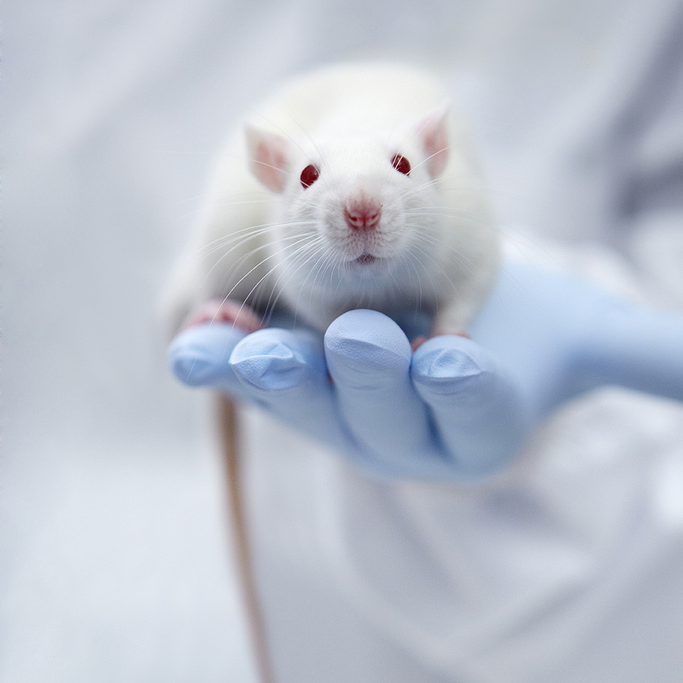 Although the effects of BPA on lab animals are fairly consistent (and scary!), gauging the impact of this chemical on humans is a lot trickier. For one, many animal studies use unrealistic levels of BPA exposure (more than humans could ever experience during daily life), or use unrealistic methods of BPA exposure (for example, injecting or implanting BPA instead of letting it be ingested orally, in turn bypassing some of the body’s natural defense barriers that could lessen its impact). Likewise, compared to humans, lab animals have differences in the way they metabolize BPA (for example, humans metabolize BPA much more rapidly than rodents and therefore have a shorter exposure window after ingestion), making it hard to translate the results of animal studies to humans in the real world. And, as with all toxicology research, it would be unethical to spend months or years exposing humans to high levels of a chemical that’s suspected to cause harm. So, we don’t have controlled trials demonstrating that BPA plays a long-term causative role in the diseases it’s associated with. The best we can do is draw from a combination of animal studies, in vitro studies, observational research, and short-term human trials.
Although the effects of BPA on lab animals are fairly consistent (and scary!), gauging the impact of this chemical on humans is a lot trickier. For one, many animal studies use unrealistic levels of BPA exposure (more than humans could ever experience during daily life), or use unrealistic methods of BPA exposure (for example, injecting or implanting BPA instead of letting it be ingested orally, in turn bypassing some of the body’s natural defense barriers that could lessen its impact). Likewise, compared to humans, lab animals have differences in the way they metabolize BPA (for example, humans metabolize BPA much more rapidly than rodents and therefore have a shorter exposure window after ingestion), making it hard to translate the results of animal studies to humans in the real world. And, as with all toxicology research, it would be unethical to spend months or years exposing humans to high levels of a chemical that’s suspected to cause harm. So, we don’t have controlled trials demonstrating that BPA plays a long-term causative role in the diseases it’s associated with. The best we can do is draw from a combination of animal studies, in vitro studies, observational research, and short-term human trials.
As with animal studies, observational research on BPA also has some drawbacks. For example, one study of over 2500 Americans found a significant correlation between BPA levels and income (BPA levels were lowest in people who had the highest annual income—meaning the more money people were making, the lower their BPA exposure was). That makes it harder to be sure whether the links we find with BPA are due to BPA itself, or due to other variables that cluster with socioeconomic status (like access to medical care, diet, and exercise frequency). Likewise, the risks of chronic low-level exposure to chemicals like BPA can be hard to study at the population level, due to difficulties in measuring people’s exposure over time, as well as nonlinear effects of BPA that can be hard to assess mathematically (not surprisingly, observational research has churned up contradictory findings about BPA and human disease risk!).
That being said, despite the limitations of our existing research, the evidence against BPA exposure has been growing exponentially in recent years. After decades of BPA research being based mostly on lab animals, a huge influx of epidemiological research and short-term human trials (prompted by growing concerns about BPA’s safety) have been linking BPA exposure to adverse health outcomes. In 2017, a literature review of 11 qualifying studies found that prenatal exposure to BPA was associated with higher rates of anxiety, depression, aggression, and hyperactivity later on in childhood, and that BPA exposure in children was associated with conduct problems, anxiety, depression, inattention, and hyperactivity. A cohort study from the same year found that higher prenatal exposure to BPA appears to cause sex-specific changes in the infant HPA-axis function (increasing baseline cortisol among female infants, but decreasing baseline cortisol among male infants). (Another analysis of this same cohort found that among the pregnant women themselves, higher urinary BPA levels were linked to dysregulated HPA-axis function, including unhealthy changes in the daytime cortisol pattern.) We know from extensive research (beyond just BPA!) that fetuses, infants, and children are particularly sensitive to endocrine disruptors, so the effects of BPA exposure being particularly harmful among these groups makes sense.
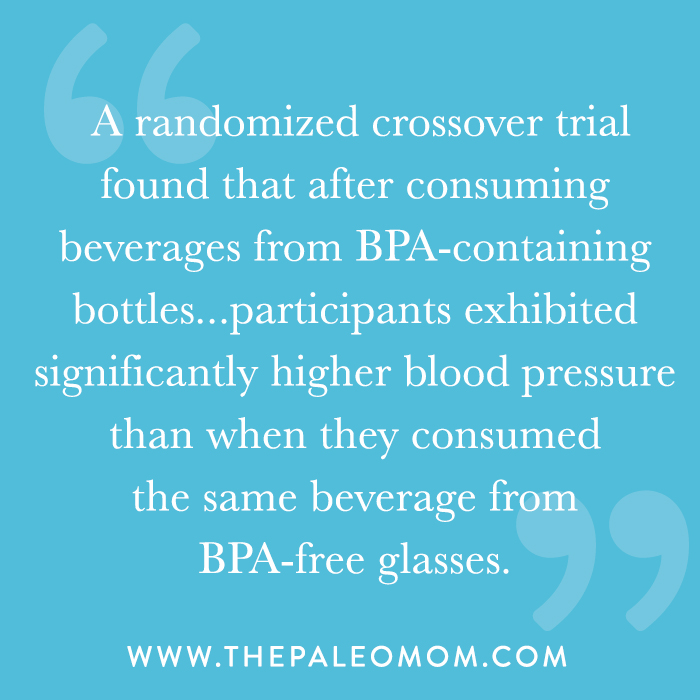 But, even non-pregnant adults appear to experience health risks from BPA exposure. A randomized crossover trial found that after consuming beverages from BPA-containing bottles (resulting in enough BPA exposure to increase their urinary levels by over 1600%), participants exhibited significantly higher blood pressure than when they consumed the same beverage from BPA-free glasses. Epidemiological studies are showing that BPA may alter male reproductive function: men who are exposed to BPA through their workplace have higher blood and urinary BPA levels along with abnormal semen parameters, reduced libido, and erectile ejaculatory difficulties. These are just a few of the findings scientists have been publishing in the last few years!
But, even non-pregnant adults appear to experience health risks from BPA exposure. A randomized crossover trial found that after consuming beverages from BPA-containing bottles (resulting in enough BPA exposure to increase their urinary levels by over 1600%), participants exhibited significantly higher blood pressure than when they consumed the same beverage from BPA-free glasses. Epidemiological studies are showing that BPA may alter male reproductive function: men who are exposed to BPA through their workplace have higher blood and urinary BPA levels along with abnormal semen parameters, reduced libido, and erectile ejaculatory difficulties. These are just a few of the findings scientists have been publishing in the last few years!
Clearly, the evidence continues to point in the direction that even low levels BPA could be causing health problems. So, why is BPA still approved for use in food containers when there’s a reasonably good chance it’s harmful?!
Unfortunately, there’s a big divide between policymakers and scientific researchers when it comes to assessing the safety of BPA. The FDA relies on very specific “guideline studies” to determine toxicity (a practice that eliminates hundreds of other studies from consideration because they don’t meet very specific criteria, and also tends to favor industry-funded studies over independently funded ones). The FDA also uses standard toxicology tests that aren’t always appropriate for studying BPA, since endocrine disruptors don’t have linear effects that scale up and down with exposure level (for example, estrogen mimics like BPA can inhibit cell growth at high concentrations, but promote cell growth at low concentrations!). Outside the US, some regulatory agencies have dismissed important biomonitoring studies in favor of lower-quality toxicokinetic studies with small sample sizes, leading to unreliable estimates of human BPA exposure. All of these issues make it difficult to create policies that adequately reflect the science!
Meanwhile, endocrinology researchers and other scientists studying the health effects of BPA tend to be far more vocal in their concern, due to having a more global view of the evidence. Unfortunately for us as consumers, the scientists aren’t the ones who get to write the safety guidelines!
How do we get exposed to BPA?
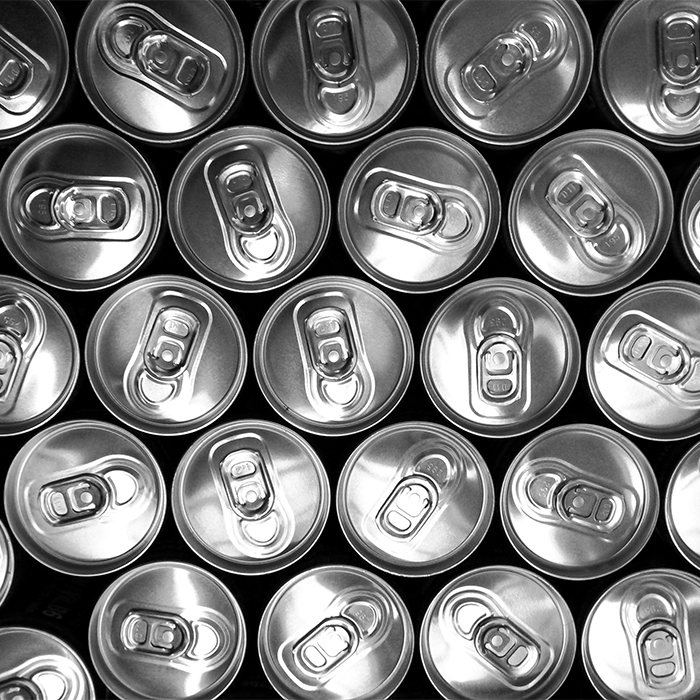 BPA is incredibly widespread in our food and environment. So widespread, in fact, that over 90% of Americans who’ve been tested for BPA have shown traces of it in their bodies! Most of this comes from eating foods or drinking beverages from BPA-containing materials, like aluminum cans and hard plastic containers. (In particular, foods or liquids that are acidic or that get heated up will cause more BPA to leach from the container they’re in, and scratched-up containers will also allow more BPA to be released.) But, BPA is also present in certain dentistry materials (like sealants and composite fillings), medical equipment (such as IV bags), and other environmental sources. Thermal paper (used for receipts and lottery tickets) also contains BPA, and cashiers or other employees who handle receipts on a frequent basis may receive considerable BPA exposure at work. Significant levels (1 mg/kg) of BPA have also been detected in vegetables that aren’t packaged in BPA-containing plastics, suggesting this chemical could be leaching out of plastic irrigation pipes and contaminating produce while it’s still growing!
BPA is incredibly widespread in our food and environment. So widespread, in fact, that over 90% of Americans who’ve been tested for BPA have shown traces of it in their bodies! Most of this comes from eating foods or drinking beverages from BPA-containing materials, like aluminum cans and hard plastic containers. (In particular, foods or liquids that are acidic or that get heated up will cause more BPA to leach from the container they’re in, and scratched-up containers will also allow more BPA to be released.) But, BPA is also present in certain dentistry materials (like sealants and composite fillings), medical equipment (such as IV bags), and other environmental sources. Thermal paper (used for receipts and lottery tickets) also contains BPA, and cashiers or other employees who handle receipts on a frequent basis may receive considerable BPA exposure at work. Significant levels (1 mg/kg) of BPA have also been detected in vegetables that aren’t packaged in BPA-containing plastics, suggesting this chemical could be leaching out of plastic irrigation pipes and contaminating produce while it’s still growing!
On the bright side, BPA has a short half-life (6 hours), and was historically believed to be excreted from the body quickly rather than building up within tissues. The fact that so many people have measurable levels of BPA when tested suggests that we experience ongoing exposure throughout the day, and our bodies rarely have periods of being “BPA-free.” Even at low levels, this consistent exposure could be a problem for our health.
Likewise, more recent research has cast doubt on the idea that BPA is totally excreted from the body in a short period of time. Several studies have found unconjugated BPA (the active form of BPA) accumulated in human fat tissue, breast milk, and placenta, indicating that BPA does have an ability to build up within the body through unexpected mechanisms.
How much BPA does it take to cause harm?
This is the million-dollar question! In the US, the EPA set the recommended exposure limit of BPA at 50 mcg/kg of bodyweight per day—a level that’s largely based on animal research from the 1980s, and that hasn’t been updated as higher-quality studies have emerged. More recently, the European Food Safety Authority set their safety level to only 4 mcg of BPA per kg of bodyweight per day (yes, that’s 12.5 times lower than our standard in the US!). These levels are under ongoing review and still subject to controversy.
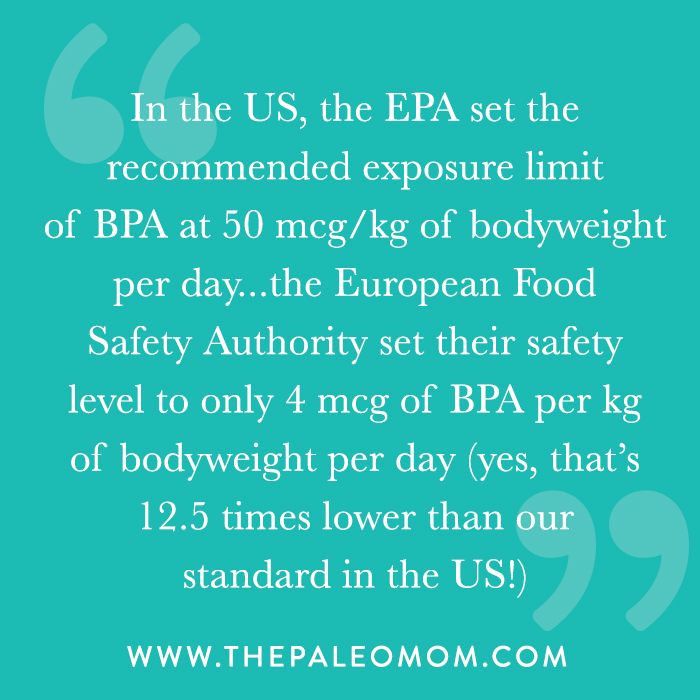 In contrast to the older toxicology studies, more recent research has shown that BPA doses significantly lower than 50 mcg/kg of bodyweight per day can cause harm, through mechanisms we’re just now discovering. The endocrine-disrupting effects of BPA have sometimes been downplayed because BPA has a relatively low binding affinity for nuclear estrogen receptors (compared to estradiol, BPA concentrations need to be 1000 times higher to induce the estrogen receptors ER-alpha and ER-beta). However, we now know that BPA stimulates cellular responses even below the levels necessary to bind to nuclear estrogen receptors, which is why the levels once believed to be safe will likely need to be revised. For example, even though BPA has a lower affinity for estrogen receptors in the nucleus, its estrogenic potency is actually equal to the body’s own estradiol for estrogen receptors outside the nucleus. There’s also evidence that BPA can bind to thyroid receptors and androgen receptors, influencing thyroid function and possibly blocking androgen action within our bodies. And, BPA appears to interact with other body systems as well, including the immune system, endocrine pancreas, and the developing central nervous system. Again, these are all things that appear to occur at levels much lower than our established safety limits!
In contrast to the older toxicology studies, more recent research has shown that BPA doses significantly lower than 50 mcg/kg of bodyweight per day can cause harm, through mechanisms we’re just now discovering. The endocrine-disrupting effects of BPA have sometimes been downplayed because BPA has a relatively low binding affinity for nuclear estrogen receptors (compared to estradiol, BPA concentrations need to be 1000 times higher to induce the estrogen receptors ER-alpha and ER-beta). However, we now know that BPA stimulates cellular responses even below the levels necessary to bind to nuclear estrogen receptors, which is why the levels once believed to be safe will likely need to be revised. For example, even though BPA has a lower affinity for estrogen receptors in the nucleus, its estrogenic potency is actually equal to the body’s own estradiol for estrogen receptors outside the nucleus. There’s also evidence that BPA can bind to thyroid receptors and androgen receptors, influencing thyroid function and possibly blocking androgen action within our bodies. And, BPA appears to interact with other body systems as well, including the immune system, endocrine pancreas, and the developing central nervous system. Again, these are all things that appear to occur at levels much lower than our established safety limits!
As mentioned earlier, one of the problems with assessing BPA safety is the fact that its effects aren’t scalable at different levels of exposure. What occurs at low levels isn’t just a mini version of what occurs at high levels! A number of studies are showing that very low BPA exposures (we’re talking environmentally relevant levels here!) can have significant effects that don’t occur at the very high doses used in toxicology studies. So, the studies the FDA and other health organizations use to assess safety and determine acceptable exposure limits might completely miss what’s happening with our bodies when we eat food from BPA-containing cans, drink water from BPA-containing water bottles, and have a mouth full of BPA-containing sealants.
We also know that the average BPA concentrations found in the human body (about one part per billion) are high enough to show associations with various diseases, again suggesting that even “regular” exposure (in terms of what the general public receives) could still be harmful.
So, how much BPA is safe for us? It’s still a question mark. The best we can do is limit the BPA exposure we have control over, adopt a healthy lifestyle, and eat a health-promoting nutrient-dense diet to give our body the best chance at protecting itself against the environmental chemicals we can’t totally avoid.
How to reduce BPA exposure
 Although safe exposure limits of BPA are still up in the air, for now, there’s enough evidence from animal experiments, in vitro studies, and observational research to strongly suspect this chemical is harmful to fetuses and children (who are extra sensitive to endocrine disrupters), and that limiting BPA exposure during pregnancy and early childhood may be imperative. The available evidence also suggests that BPA may be a legitimate player in the development of certain chronic diseases among adults. As scientists continue to explore the health effects of this widespread chemical (and as regulatory agencies continue to evaluate new safety studies!), it would be smart for us to reduce our exposure when possible! The best ways to do that are:
Although safe exposure limits of BPA are still up in the air, for now, there’s enough evidence from animal experiments, in vitro studies, and observational research to strongly suspect this chemical is harmful to fetuses and children (who are extra sensitive to endocrine disrupters), and that limiting BPA exposure during pregnancy and early childhood may be imperative. The available evidence also suggests that BPA may be a legitimate player in the development of certain chronic diseases among adults. As scientists continue to explore the health effects of this widespread chemical (and as regulatory agencies continue to evaluate new safety studies!), it would be smart for us to reduce our exposure when possible! The best ways to do that are:
- When possible, choose glassware and stainless steel for storing food.
- Buy BPA-free bottles and sippy cups for infants and children (by law, baby bottles and sippy cups manufactured since 2012 must be BPA-free).
- Avoid heating or reheating foods in BPA-containing plastic containers.
- Use drinking cups and bottles that are labeled “BPA-free.”
- Minimize the consumption of canned foods (about 75% of food cans contain BPA!), and/or seek out companies whose canned products are BPA-free. This is especially true for acidic canned foods like tomato sauce, since acidity increases the amount of BPA that migrates from the container into the food.
- If you work as a cashier, wear gloves to minimize exposure to the BPA in receipts. Likewise, during tax season, consider wearing gloves while you handle that shoebox full of receipts you collected from the previous year!
What about BPA alternatives?
 Ever since BPA became a mainstream concern, BPA alternatives have been entering the market, often labeled “BPA-free” and marketed as safer substitutes for cans, bottles, containers, and other products typically made with BPA. Unfortunately, these new materials might be offering us a false sense of security. A 2017 study found that out of six bisphenol analogs used in “BPA-free” products, three (BPAF, BPB, and BPZ) actually had higher estrogenic activity than BPA itself! That’s right: they were even more potent as endocrine disruptors than the chemical we’re trying to avoid. At the same time, in separate studies, other BPA alternatives (bisguaiacol F, tetramethyl bisphenol F epoxy resin, and tetramethyl bisphenol F diglycidyl) appear to have lower risk for affecting estrogenic or androgenic endocrine activity. If we really want to do our homework, we can contact companies using BPA-free materials and ask them exactly what chemicals they’re replacing BPA with.
Ever since BPA became a mainstream concern, BPA alternatives have been entering the market, often labeled “BPA-free” and marketed as safer substitutes for cans, bottles, containers, and other products typically made with BPA. Unfortunately, these new materials might be offering us a false sense of security. A 2017 study found that out of six bisphenol analogs used in “BPA-free” products, three (BPAF, BPB, and BPZ) actually had higher estrogenic activity than BPA itself! That’s right: they were even more potent as endocrine disruptors than the chemical we’re trying to avoid. At the same time, in separate studies, other BPA alternatives (bisguaiacol F, tetramethyl bisphenol F epoxy resin, and tetramethyl bisphenol F diglycidyl) appear to have lower risk for affecting estrogenic or androgenic endocrine activity. If we really want to do our homework, we can contact companies using BPA-free materials and ask them exactly what chemicals they’re replacing BPA with.
Ultimately, until BPA alternatives undergo more rigorous and long-term safety testing in humans, our best bet is to stick with materials we know to be safe (especially glass and stainless steel), and to minimize our intake of foods and beverages from canned products.
Bottom line
Although there are plenty of instances where the hazards of certain chemicals are overblown, BPA really is one we should keep on our radar. In the past several years alone, many human studies have been published that legitimize the safety risks of BPA in humans. Although we can’t eliminate our exposure entirely (due to BPA being so ubiquitous in the environment), we can take measures to limit our exposure from diet, which is by far the biggest source of BPA for most of us. Combined with living healthfully (including adequate daily movement, plenty of sleep, and stress reduction!) and eating a nutrient-dense Paleo diet, we can give our bodies a fighting chance at staying healthy among unavoidable environmental pollutants!
Citations
Bae S & Hong YC. “Exposure to bisphenol A from drinking canned beverages increases blood pressure: randomized crossover trial.” Hypertension. 2015 Feb;65(2):313-9. doi: 10.1161/HYPERTENSIONAHA.114.04261. Epub 2014 Dec 8.
Beausoleil C, et al. “Regulatory identification of BPA as an endocrine disruptor: Context and methodology.” Mol Cell Endocrinol. 2018 Feb 6. pii: S0303-7207(18)30054-6. doi: 10.1016/j.mce.2018.02.001. [Epub ahead of print]
Calafat AM, et al. “Exposure of the U.S. population to bisphenol A and 4-tertiary-octylphenol: 2003-2004.” Environ Health Perspect. 2008 Jan;116(1):39-44. doi: 10.1289/ehp.10753.
Durmaz E, et al. “Urinary bisphenol A levels in Turkish girls with premature thelarche.” Hum Exp Toxicol. 2018 Jan 1:960327118756720. doi: 10.1177/0960327118756720. [Epub ahead of print]
Gao X & Wang H-S. “Impact of Bisphenol A on the Cardiovascular System — Epidemiological and Experimental Evidence and Molecular Mechanisms.” Int J Environ Res Public Health. 2014 Aug;11(8):8399–8413.
Geens T, et al. “A review of dietary and non-dietary exposure to bisphenol-A.” Food Chem Toxicol. 2012 Oct;50(10):3725-40. doi: 10.1016/j.fct.2012.07.059. Epub 2012 Aug 4.
Giesbrecht GF, et al. “Prenatal bisphenol a exposure and dysregulation of infant hypothalamic-pituitary-adrenal axis function: findings from the APrON cohort study.” Environ Health. 2017 May 19;16(1):47. doi: 10.1186/s12940-017-0259-8.
Giesbrecht GF, et al. “Urinary bisphenol A is associated with dysregulation of HPA-axis function in pregnant women: Findings from the APrON cohort study.” Environ Res. 2016 Nov;151:689-697. doi: 10.1016/j.envres.2016.09.007. Epub 2016 Sep 16.
Gowder SJ. “Nephrotoxicity of bisphenol A (BPA)–an updated review.” Curr Mol Pharmacol. 2013 Nov;6(3):163-72.
Hartle JC, et al. “The consumption of canned food and beverages and urinary Bisphenol A concentrations in NHANES 2003-2008.” Environ Res. 2016 Oct;150:375-82. doi: 10.1016/j.envres.2016.06.008. Epub 2016 Jun 28.
Huang D, et al. “Effects of low dose of bisphenol A on the proliferation and mechanism of primary cultured prostate epithelial cells in rodents.” Oncol Lett. 2017 Sep;14(3):2635-2642. doi: 10.3892/ol.2017.6469. Epub 2017 Jun 23.
Kang JH, et al. “Factors influencing the migration of bisphenol A from cans.” J Food Prot. 2003 Aug;66(8):1444-7.
Kim KN, et al. “Bisphenol A exposure and asthma development in school-age children: a longitudinal study.” PLoS One. 2014 Oct 30;9(10):e111383. doi: 10.1371/journal.pone.0111383. eCollection 2014.
Kuiper GG, et al. “Comparison of the ligand binding specificity and transcript tissue distribution of estrogen receptors alpha and beta.” Endocrinology. 1997 Mar;138(3):863-70.
Manfo FP, et al. “Adverse effects of bisphenol A on male reproductive function.” Rev Environ Contam Toxicol. 2014;228:57-82. doi: 10.1007/978-3-319-01619-1_3.
Mesnage R, et al. “Editor’s Highlight: Transcriptome Profiling Reveals Bisphenol A Alternatives Activate Estrogen Receptor Alpha in Human Breast Cancer Cells.” Toxicol Sci. 2017 Aug 1;158(2):431-443. doi: 10.1093/toxsci/kfx101.
Mileva G, et al. “Bisphenol-A: epigenetic reprogramming and effects on reproduction and behavior.” Int J Environ Res Public Health. 2014 Jul 22;11(7):7537-61. doi: 10.3390/ijerph110707537.
Provvisiero DP, et al. “Influence of Bisphenol A on Type 2 Diabetes Mellitus.” Int J Environ Res Public Health. 2016 Oct 6;13(10). pii: E989.
Rebuli ME, et al. “Investigation of the effects of subchronic low dose oral exposure to bisphenol A (BPA) and ethinyl estradiol (EE) on estrogen receptor expression in the juvenile and adult female rat hypothalamus.” Toxicol Sci. 2014 Jul;140(1):190-203. doi: 10.1093/toxsci/kfu074. Epub 2014 Apr 20.
Rochester JR. “Bisphenol A and human health: a review of the literature.” Reprod Toxicol. 2013 Dec;42:132-55. doi: 10.1016/j.reprotox.2013.08.008. Epub 2013 Aug 30.
Szafran AT, et al. “Characterizing properties of non-estrogenic substituted bisphenol analogs using high throughput microscopy and image analysis.” PLoS One. 2017 Jul 13;12(7):e0180141. doi: 10.1371/journal.pone.0180141. eCollection 2017.
Teng C, et al. “Bisphenol A affects androgen receptor function via multiple mechanisms.” Chem Biol Interact. 2013 May 25;203(3):556-64. doi: 10.1016/j.cbi.2013.03.013. Epub 2013 Apr 4.
Vandenberg LN, et al. “Biomonitoring Studies Should Be Used by Regulatory Agencies to Assess Human Exposure Levels and Safety of Bisphenol A.” Environ Health Perspect. 2010 Aug; 118(8): 1051–1054.
Vandenberg LN, et al. “Hormones and endocrine-disrupting chemicals: low-dose effects and nonmonotonic dose responses.” Endocr Rev. 2012 Jun;33(3):378-455. doi: 10.1210/er.2011-1050. Epub 2012 Mar 14.
Veiga-Lopez A, et al. “Gender-Specific Effects on Gestational Length and Birth Weight by Early Pregnancy BPA Exposure.” J Clin Endocrinol Metab. 2015 Nov;100(11):E1394-403. doi: 10.1210/jc.2015-1724. Epub 2015 Sep 25.
Verstraete SG, et al. “Bisphenol a increases risk for presumed non-alcoholic fatty liver disease in Hispanic adolescents in NHANES 2003-2010.” Environ Health. 2018 Feb 1;17(1):12. doi: 10.1186/s12940-018-0356-3.
Weatherill YB, et al. “The xenoestrogen bisphenol A induces inappropriate androgen receptor activation and mitogenesis in prostatic adenocarcinoma cells.” Mol Cancer Ther. 2002 May;1(7):515-24.

